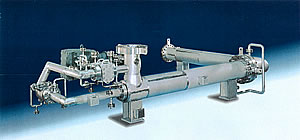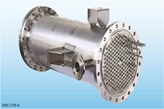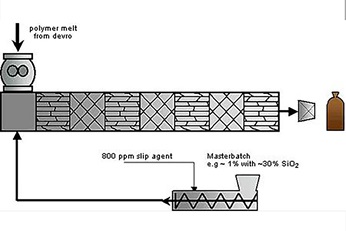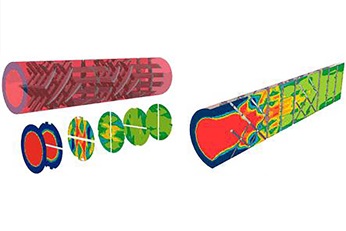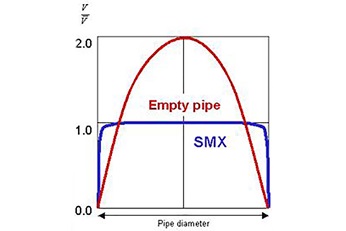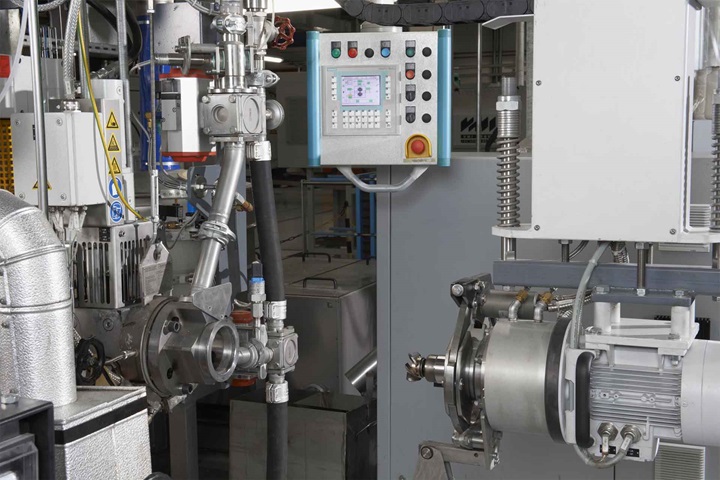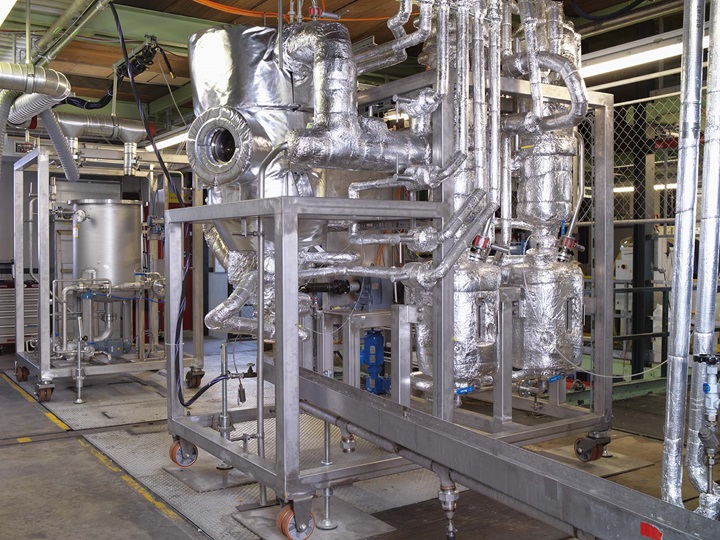- Significantly lower investment compared to dynamic solutions (extruder, kneader)
- Considerably lower operating costs (maintenance, power consumption, for example)
- Prevention of polymer degradation due to low shear force
- High and constant homogeneity of additives in polymer melt
- Simultaneous admixing of several additives
- High mixing efficiency and plug flow behavior ensure narrow residence time distributions and fast grade switching
Upgrading technology
Value adding to polymer products
- UV stabilizers
- Antistatic agents
- Antioxidants
- Mold release agents
- Mineral oil and stearates
- Colorants and pigments
- Masterbatches in general
Upgrading after polymerization
After polymerization, additives can be mixed into the polymer melt prior to pelletization, in order to upgrade the final product.
Sulzer has many years of experience in providing successful upgrading solutions for improved product quality and profitability of customers’ products and processes. Our extensive reference list includes examples of complex applications with regard to differences in viscosity, mixing ratio and homogeneity aspects.
Admixing of additives into high-viscosity products is performed in various hydraulic regimes, ranging from laminar to transitional and turbulent. The polymer additive mixing ratio defines the degree of mixing complexity. The Sulzer polymer upgrading technology is based on our proprietary static mixing equipment.
Admixing of low-viscosity additives in polymer melts
Many additives used in the polymer production industry are of low viscosity and are only partly soluble in the polymer melt. Normally, the homogeneity requirements are very high since the polymer is often pelletized immediately after the static mixer, and already small inhomogeneities may result in strand breaking.
Sulzer's SMX and SMX plus static mixers, together with Sulzer's vast experience in admixing low-viscosity additives into polymer melts, enable even viscosity differences of up to six orders of magnitude (106) to be handled, while achieving still excellent homogeneity at the end of the mixer.
Admixing of masterbatch into polymer melt
A common way to incorporate additives into polymer melt is to use masterbatches, that is, concentrates of additives in a polymer carrier.
In particular, solid additives (for example, pigments, fillers) cannot be admixed directly into a melt stream. In such cases, the masterbatch can be fed into the main polymer stream through a small side extruder.
Blending / compounding of two polymers
When two different polymers have to be mixed together to form a compound, very often dynamic systems such as extruders are used.
Static mixers, however, show equally good results for compounding of different polymers, while having the advantage of low maintenance costs and spare requirements. For most compounding tasks, the required shear forces are not very high. Sulzer static mixers are therefore a true and cost-effective alternative in compounding your polymers.
Dispersing of non / partly soluble additives in polymer melts
Insoluble additives or high concentrations of only partly soluble additives can be perfectly dispersed with Sulzer static mixers.
Normally, these additives have a very low viscosity (for example, water, oils, and gasses). Examples are foaming agents, stripping agents, mineral oil, and stearates. The Sulzer mixer geometry along with Sulzer's special distribution devices have proven their efficiency for these applications with many industrial references.
Our experienced engineers will carefully design the mixer to reach the required shear force, in order to overcome the surface tension of the additive, and to achieve the required droplet size. Static mixers may therefore even be used to create stable emulsions and mini-emulsions for polymerization.
In addition, the elongational shear forces – in a properly designed static mixer – ensure optimum dispersion performance within the shortest possible installation length.
Melt homogenization
In order to enable stable sheet extrusion or stable pelletization with uniform granules, it is essential that the polymer melt stream is as homogeneous as possible prior to pelletization. This applies to composition, viscosity and temperature. Our SMX and SMX plus static mixers show optimally equalized gradients of viscosity, temperature and color. Even in existing plants, where space is limited, mixers of various geometries can be installed to provide the desired effect.
Applications
Sulzer’s static mixer approach is successfully employed in upgrading/admixing in many different polymer industries:
- Polystyrene, GPPS, HIPS
- Styrenic copolymers, ABS/SAN
- Polymethylmethacrylate, PMMA
- Polyolefines, PE (LLDPE, LDPE, HDPE), PP
- Silicone polymers and elastomers
- Cellulose fibers
- Polyethylene terepthalate, PET
- Polyamide PA, PA6
- Viscose
- Polycarbonate, PC
- Polyoxymethylene, POM
- Biodegradable polymers, PLA
- PBTP, PB, PBS, PIB
- PUR
- Teflon
- Adhesives
- Special polymers as additives for concrete / other polymers
- All kind of polymers in solution or as copolymers
Contact our Polymer team below
